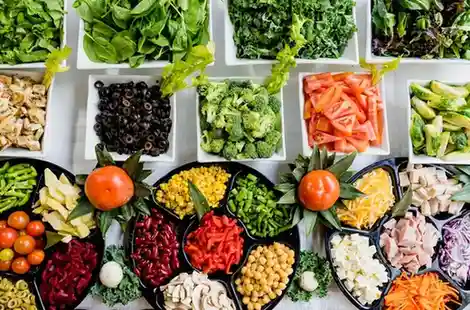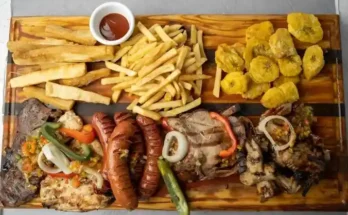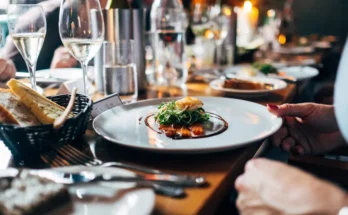Food as More Than Fuel:
When you think about food, it’s easy to focus on the immediate: the hunger in your belly, the aroma wafting from the kitchen, the burst of flavor on your tongue. But food is more than just sustenance. It’s a memory, a tradition, a bridge between generations and cultures. It’s both deeply personal and universally shared.
Food doesn’t just nourish our bodies—it feeds our identities. From comfort dishes passed down in family cookbooks to experimental creations in Michelin-star kitchens, every bite carries a story. And in that story, we find emotion, art, science, and connection.
The Cultural Fabric of Cuisine:
-
Stories of Place and People
Every culture has a distinct culinary language. In Italy, pasta is more than a dish—it’s a way of life. In Japan, food presentation is treated as an art form rooted in centuries of tradition. In Mexico, spices and slow-cooked meats speak to a vibrant blend of indigenous and Spanish influences.
Cuisine reveals how people live, what they value, and how they connect with the earth. A country’s geography, climate, and history are all cooked into its signature dishes. Consider India, where regional differences in spices and ingredients tell tales of colonialism, trade, and migration. Or think of Ethiopia’s injera, not just as a flatbread, but as a communal plate meant for sharing—a symbol of unity and trust.
-
Fusion Food and Global Influence
In today’s interconnected world, borders blur—and so do flavors. Fusion cuisine, once a novelty, is now a common celebration of culinary innovation. Korean tacos, sushi burritos, or Thai spaghetti are not just trendy—they’re symbolic of cultural exchange. When flavors from one corner of the world meet techniques from another, new identities are born.
These modern mashups reflect not only changing palates but also the stories of migration, adaptation, and creativity. The world is becoming a dining table with limitless possibilities, and every meal is an invitation to taste something new.
The Science Behind Taste:
-
The Five Basic Tastes
We often speak of taste in simple terms—sweet, salty, sour, bitter, and umami. But the way we perceive flavor is a beautifully complex dance between our taste buds, our sense of smell, and even our memories.
The savory comfort of umami-rich miso soup, the tingling bitterness of dark chocolate, the sharpness of lemon on the tongue—these aren’t just chemical reactions. They’re emotional triggers. What we love to eat often has as much to do with nostalgia as it does with biology.
Moreover, texture, temperature, and even the sound of crunching play roles in how satisfying we find a dish. That’s why a fresh apple tastes so different from applesauce, even if the ingredients are essentially the same.
-
Emotional Eating
Have you ever wondered why we reach for ice cream when we’re sad, or crave something spicy when we’re stressed? Emotional eating isn’t just about indulgence. It’s tied to our brain’s reward system. Comfort foods trigger dopamine—the same chemical that sparks happiness.
More than that, they connect us to memories. A warm bowl of chicken soup might not just fight a cold—it might remind you of your grandmother. A simple sandwich might bring back lunchtime in school. Food, in this sense, becomes a portal—a time machine built of aroma and texture.
The Art of Cooking:
-
Cooking as a Personal Expression
For some, cooking is a chore. For others, it’s a passion—a sacred ritual. No matter your skill level, cooking is a form of self-expression. Each ingredient you choose, every method you use, reflects something about you. Are you experimental, trying out obscure spices? Or are you methodical, perfecting your grandmother’s pie crust recipe?
Cooking allows us to transform chaos—random ingredients—into something intentional, harmonious, and deeply satisfying. And like any art form, it allows for both tradition and innovation.
-
The Rise of Home Chefs and Culinary Confidence
The pandemic transformed kitchens into classrooms. As restaurants closed, more people rediscovered their inner chefs. Social media platforms, from Instagram to TikTok, turned everyday cooks into influencers. Sourdough starters were nurtured like pets, and banana bread had its 15 minutes of fame.
This movement democratized cooking. It reminded us that you don’t need fancy equipment or years of training to create delicious food. All you need is curiosity, a little patience, and a love for sharing.
Food and Memory:
-
How Food Anchors Our Past
There’s a reason certain foods hit harder than others. Maybe it’s the cinnamon in holiday cookies, or the smoky edge of a grilled burger at a summer barbecue. These aren’t just flavors—they’re experiences sealed in time.
Our brain links taste with memory in powerful ways. That’s why something as simple as the smell of bread baking can transport you to your childhood kitchen. These connections are visceral, immediate, and deeply human.
-
Meals as Milestones
Think about birthdays, weddings, and family gatherings. Food is always there, marking the occasion. From wedding cakes to Thanksgiving turkeys, certain dishes become traditions in themselves. They aren’t just part of the celebration—they are the celebration.
Even in loss, food plays a role. In many cultures, meals are shared after funerals—not just as sustenance, but as a way to comfort and connect. In moments of joy or grief, food holds us together.
The Sustainability Challenge:
-
Rethinking How We Eat
As much joy as food brings, it also raises tough questions. How sustainable is our current food system? From factory farming to food waste, the environmental cost of what we eat can be staggering.
Today’s conscious consumers are increasingly aware of these issues. Plant-based diets, farm-to-table practices, and zero-waste cooking are more than trends—they’re movements with real impact. Every choice we make, from the packaging we avoid to the produce we buy locally, shapes the future of food.
-
Local Ingredients, Global Impact
Eating local doesn’t mean giving up international flavors—it means being thoughtful about where your ingredients come from and how they were grown. Supporting local farmers not only reduces carbon footprints but also helps strengthen community economies.
Meanwhile, chefs around the world are reimagining luxury—trading exotic imports for indigenous, seasonal, and often overlooked ingredients. This isn’t just better for the planet. It also leads to more creative, meaningful meals.
The Future of Food:
-
Technology Meets Taste
What will food look like in 50 years? From lab-grown meat to vertical farms and edible packaging, technology is transforming the way we produce and consume food. Innovations are making it possible to feed more people with fewer resources—and that’s crucial in a world facing population growth and climate challenges.
But the future isn’t just about survival. It’s about enhancement. Personalized nutrition, smart kitchens, and AI-powered recipe creation hint at a world where food becomes not only more efficient but also more attuned to our health, lifestyle, and even DNA.
-
Holding Onto the Soul of Eating
As we embrace progress, it’s vital to hold onto what makes food so magical. The gathering of friends around a table, the joy of a shared meal, the comfort of something lovingly cooked—these are timeless rituals. No technology can replace the intimacy of eating together.
Even in the most futuristic kitchen, with robots prepping your salad and apps tracking your macros, food must remain what it’s always been at its best: a way to connect, celebrate, and feel alive.
Conclusion:
Food is everywhere—on our plates, in our memories, in our conversations. It defines us, unites us, and surprises us. Whether you’re eating a seven-course tasting menu or sharing street food in a crowded market, you’re taking part in something deeply human.
In the end, food isn’t just about taste. It’s about touch, time, and togetherness. It’s our past, present, and future—served warm, spicy, and always with a story to tell.




